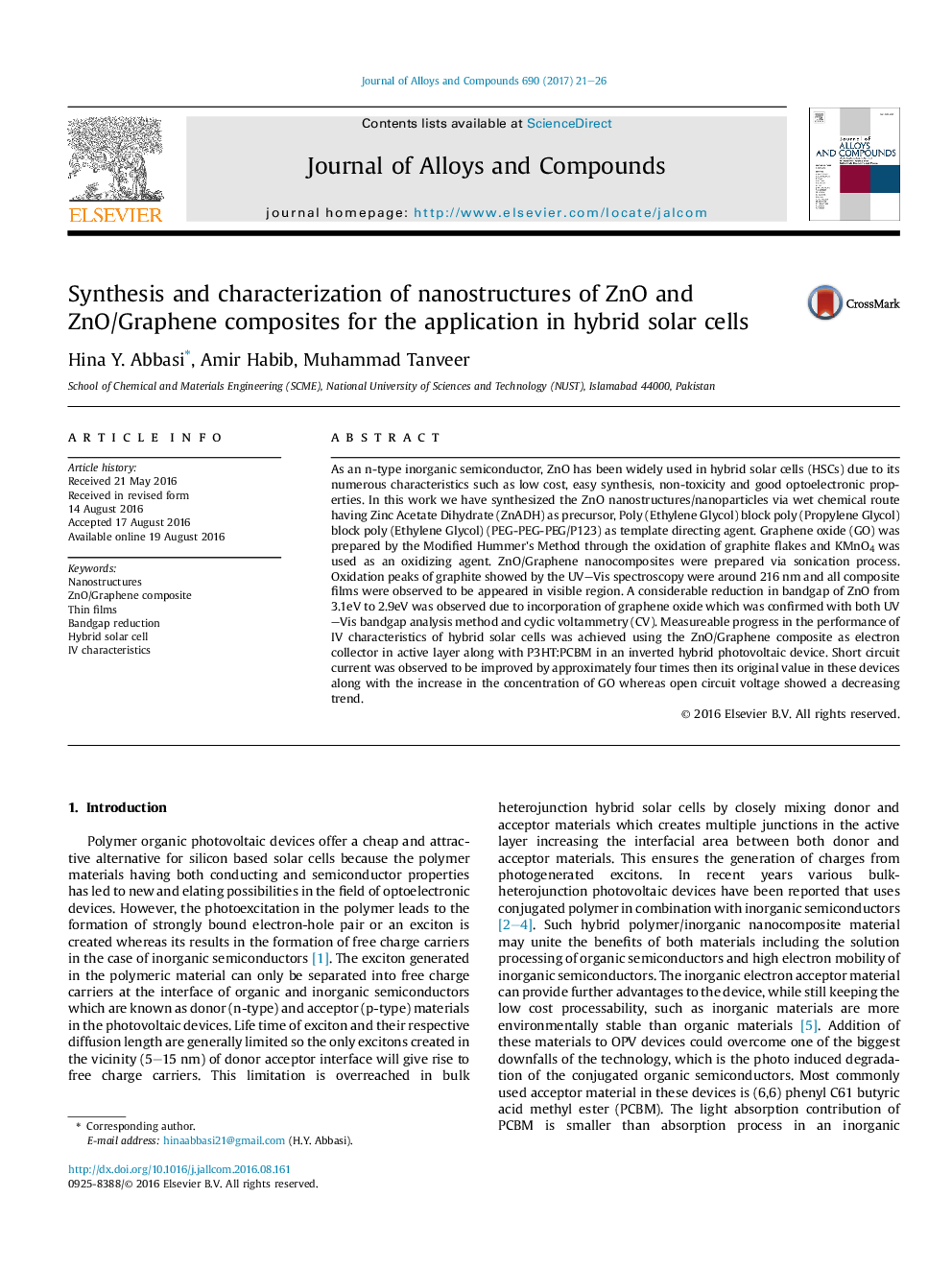| Article ID | Journal | Published Year | Pages | File Type |
|---|---|---|---|---|
| 1604887 | Journal of Alloys and Compounds | 2017 | 6 Pages |
•Uniform distribution of ZnO nanostructures all over the film surface.•Reduction of energy bandgap of ZnO from 3.14 eV to 2.94 eV.•Significant improvement in IV characteristics of Hybrid Solar Cell.
As an n-type inorganic semiconductor, ZnO has been widely used in hybrid solar cells (HSCs) due to its numerous characteristics such as low cost, easy synthesis, non-toxicity and good optoelectronic properties. In this work we have synthesized the ZnO nanostructures/nanoparticles via wet chemical route having Zinc Acetate Dihydrate (ZnADH) as precursor, Poly (Ethylene Glycol) block poly (Propylene Glycol) block poly (Ethylene Glycol) (PEG-PEG-PEG/P123) as template directing agent. Graphene oxide (GO) was prepared by the Modified Hummer's Method through the oxidation of graphite flakes and KMnO4 was used as an oxidizing agent. ZnO/Graphene nanocomposites were prepared via sonication process. Oxidation peaks of graphite showed by the UV–Vis spectroscopy were around 216 nm and all composite films were observed to be appeared in visible region. A considerable reduction in bandgap of ZnO from 3.1eV to 2.9eV was observed due to incorporation of graphene oxide which was confirmed with both UV–Vis bandgap analysis method and cyclic voltammetry (CV). Measureable progress in the performance of IV characteristics of hybrid solar cells was achieved using the ZnO/Graphene composite as electron collector in active layer along with P3HT:PCBM in an inverted hybrid photovoltaic device. Short circuit current was observed to be improved by approximately four times then its original value in these devices along with the increase in the concentration of GO whereas open circuit voltage showed a decreasing trend.
